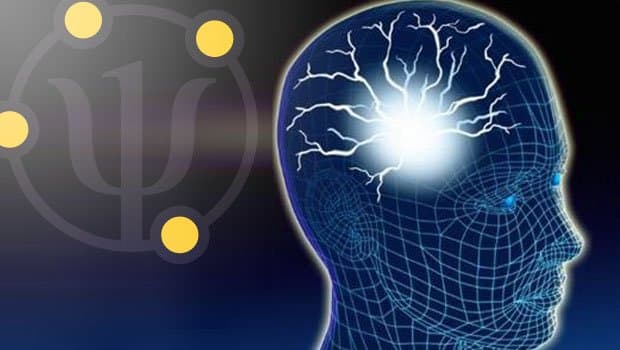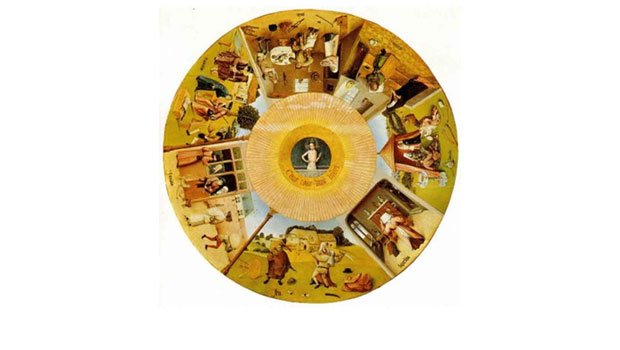Sommario
Some history
One of the greatest difficulties which are met by professionals who practise psychoanalysis is that the session verifications are hardly communicable and verifiable out of the setting: this fact has contributed to lead many people’s minds, even scientists’ who should use the verification of the observable datum as a praxis, to structure the wrong conviction that psychoanalysis is not scientific (see the article by Nicola Peluffo “Psicoanalisi e Scienza” wich appears in the pages of this Magazine). 1
Nevertheless, everyday in thousands of different laboratories all over the world (the professionals’ studies), people of different nationalities and cultures touch the same associative themes and describe the same universal conflictual nuclei: Oedipus-castration, death anxiety, conflictual management of sexual and aggressive desires. The repeated observation of the same dynamics has led to the individualization of repetitive mechanisms of organization of the psychic dynamism which have assumed, for the researchers of such phenomena, not only the significance of mere hypotheses, but the value of scientific laws.
No psychoanalyst in the world, I believe, would dare doubt the existence of Oedipus or the phases of fixation of libido.
Difficulties arise when some scientists use instruments of observation which others do not (yet) possess: Galileo learnt this the hard way, as well as the consorts Curie and a lot of other precursors.
In the fifties a Freudian psychoanalyst, Silvio Fanti, had the intuition of extending the time of the psychoanalysis session, taking it from the classical 50-60 minutes to 3-4 consecutive hours, with the intention of adjusting the observation time of phenomena to the dissolution rate of resistances: he founded a new technique, the micropsychoanalysis, which is currently practised by a few hundred professionals in the world.
Micropsychoanalysts very soon had to deal with the production, from their analysed people, of an unusual associative material: a large number of analysis hours were being devoted to the description of deep sexual-aggressive dynamics which were temporally placed, by the patients, in a completely archaic period: the intrauterine age.
Many analysed people in micropsychoanalysis have been describing with anxiety the existence of threat-annihilation experiences coming from the maternal pole and specular desires of destruction-assimilation coming from the fetal pole.
The repeated observation of this phenomenon induced Fanti to theorize the existence of an early phase of libidinal organization (sexuality and aggressiveness) which he defined “Initiatory Stage” and the existence of a mother-fetus psychosomatic aggressive exchange which he defined “Intrauterine War”: such hypotheses were published in his book “L’ Homme en micropsychanalyse” in 1981. 2
Already previously in Italy Nicola Peluffo, at the time Professor in Social Psychology at the University of Torino, even before meeting Silvio Fanti, had begun to practise long sessions and on the spur of the unusual observed material, had concentrated his researches on those themes. He formalized them, back in 1976, in his book “Micropsicoanalisi dei processi di trasformazione” (Micropsychoanalysis of transforming processes). 3
Needless to say that a frantic reaction against the two authors’ theses broke out in some sectors of the academic world, above all the ones permeated by Catholic culture which could not accept that the fable of the uterine Nirvana and the loving gift of life could be brought up for discussion. In 1989 I personally witnessed a painful episode which made me understand how ignorance and prejudice reign in some (wrongly renowned) Italian universities. I had followed the degree thesis of a final year student of the faculty of psychology at the university “La Sapienza” (“The Wisdom”[sic!]) in Rome. Fascinated by the new micropsychoanalytic theses, she had dedicated a whole chapter to the existence of the “intrauterine war”: the scornful laughter which the so-called “professors” (the most pompous names of Italian Psychology) addressed to her, is still ringing in my ears.
Fortunately, truth is the daughter of time, as we shall see in the following chapters.
The intrauterine war
 In “Micropsicoanalisi dei processi di trasformazione” 4 , published in 1976, Peluffo exposed, therefore, the fruit of his researches which he had begun in 1972, quoting the biological literature of that time, among which, the work by Alan E. Beer and R. E. Billingham who tried to show in their article titled “The embryo as a transplant” how the fetus may be considered as an (aggressive) allograft in every stage of its existence:
In “Micropsicoanalisi dei processi di trasformazione” 4 , published in 1976, Peluffo exposed, therefore, the fruit of his researches which he had begun in 1972, quoting the biological literature of that time, among which, the work by Alan E. Beer and R. E. Billingham who tried to show in their article titled “The embryo as a transplant” how the fetus may be considered as an (aggressive) allograft in every stage of its existence:
“…The conception – the two authors write – normally starts with the inoculation of the female guest from sperms coming from a male donor, not genetically similar. These specialized cells have been shown to bring transplant antigens and therefore, they have the power to set off a reaction… “. 5
Peluffo underlined that, after all, the maternal somatopsychic unity behaves towards the reaction provoked in itself by the antigen-embryo, as it would towards any illness, for which the mother’s immune system provides the child with defenses. That is to say “… she reacts against the possible effects of her own immune reaction towards the graft-child, stimulated by the child who in his/her turn would feel the mother as an invader.”6
Beer and Billingham concluded that the uterus cannot be considered a privileged place for an embryo model transplant and hypothesized that the mother’s immune reaction is blocked or deleted by some mechanisms associated with the fetus. More than thirty years of research and experimentations have confirmed their hypotheses: as Zoltan Fehervari and Shimon Sakaguchi remember in their recent work devoted to the regulatory T lymphocytes (T reg) 7:“Research hints, too, at a role for T-regs in protecting pregnancies. Every pregnancy unavoidably poses quite a challenge to the mother’s immune defenses. Because the fetus inherits half its genes from the father, it is genetically half-distinct from its mother and thus is in essence an organ transplant. Within the trophoblast, the placental tissue that attaches the fetus to the uterine wall, a number of mechanisms give the fetus some safety from what would amount to transplant rejection. The trophoblast not only presents a physical barrier to would-be attackers in the mother’s blood but also produces immunosuppressive molecules.
The mother’s immune system seems to undergo changes as well…Some recent experiments offer more direct support. At the University of Cambridge, Alexander Betz and his colleagues have shown that during pregnancy in mice, maternal T-regs expand in number. Conversely, an experimentally engineered absence of T-regs leads to fetal rejection marked by a massive infiltration of immune cells across the maternal-fetal boundary. It is tempting to speculate that in some women, insufficient T-reg activity may underlie recurrences of spontaneous abortion.”
Nicola Peluffo affirmed, in the above mentioned pioneering work, that, at the level of the psychic elaboration, the state of somatopsychic imbalance constituted by pregnancy would induce the manifestation in the mother of an oneiric and phantasy experience of bacterial invasion, which is nothing other than the psychic representation of a somatic process: the immune reaction. Moreover, in the involucre constituted by the maternal-fetal unity, there would be a meeting, a dialogue, an interaction, among the mother’s unconscious, preconscious and conscious psychic experiences, which work as stimulus-fantasies that evoke, in the future baby, the arising of answer-phantasies, existing in the hereditary potentiality. Such a psychic dynamics, often characterized by the structuration of invasion or mutual phagocytation phantasies, would take the place of the somatic rejection reaction and the conflict would move on the psychic elaboration level, leaving the somatic field.
Later, Silvio Fanti maintained this subject and in his book “La Micropsicoanalisi” (1981), with regard to the intrauterine war, wrote: “The mother scarsely escapes the cellular explosion of her uterine derivative, which survives only by dodging or taking the psychobiological blows that she inflicts on it”. 8
This thesis gives no space to mediations. According to Fanti, the uterine age, far from being the period of softened quietness which it was once supposed to be, is the theatre of a psycho-biological conflict which will leave important consequences for the whole individual life.
We must schematically remember that:
– From the immunological point of view the embryo is an allograft since the first attempts of nesting.
– The biochemical stimuli, coming from paternal and then parental material, unceasingly excite the maternal immune system, which replies blow for blow synthesizing antibodies that bind to the trophoblast, first facilitating its lysis, then its phagocytosis.
– Even if some psychobiological tolerance develops between the two poles of the uterine life (especially through the action of T reg), it still remains very precarious as proved, for instance, by the violent psycho-somatic reactions of the gravidic hyperemesis, which are an attempt of elimination-rejection of the conception product. 9
– This mutual exchange of somato-psychic blows constitutes the first sexual-aggressive apprenticeship of the future individual and forms the lines on which future life will develop. 10
Confirmations from evolutionary Biology
The evolutionary biologist from Harvard, David Haig, also considers pregnancy a process which does not develop in perfect harmony. Haig, thus confirming the observations from the psychic aspect made by micropsychoanalysts, affirms that mother and fetus engage in an unconscious fight for nourishment and for mutual survival. Haig also thinks that the conflict can even continue after birth and influence the future life, explaining psychological disorders such as depression and autism.
In an article of 1995, 11 Haig seems to use the same terminology which micropsychoanalysts have used, for decades raising waves of criticism and causing lack of understanding.
Haig reminds us how the most intimate human relationship is that between a mother and her fetus.
 The latter receives nourishment from the maternal blood, shares every breath that its mother takes and anything that she eats and utilizes maternal fat reserves when food is scarce. But Haig wonders if the idea of harmonious cohabitation is nothing but an illusion and formulates the question: “… is the fetus an alien intruder, a parasite that takes what it can without concern for its maternal host? “.
The latter receives nourishment from the maternal blood, shares every breath that its mother takes and anything that she eats and utilizes maternal fat reserves when food is scarce. But Haig wonders if the idea of harmonious cohabitation is nothing but an illusion and formulates the question: “… is the fetus an alien intruder, a parasite that takes what it can without concern for its maternal host? “.
Haig, as Peluffo and then Fanti had already emphasized in their works, reminds us that, contrary to what happens in other mammals, the human placenta is invasive: the embryo, since its first implantation, sends out cells that invade the blood vessels supplying the uterine lining. These invasive cells destroy the maternal endometrium and open a number of veritable pumping mouths in the maternal vessels: “The result is that the fetus has direct access to its mother’s blood, and the mother is unable to constrict the vessels”. Furthermore, the fetus, having a direct access to the maternal vascular system, can introduce a number of strategically important substances for its survival into the maternal organism. 12
Haig sometimes mentions that the placenta may have an inadequate supply of maternal blood: one way for the placenta to increase the hematic supply and therefore the vital substances, is to determine an increase of the maternal blood pressure, which is what occurs in pre-eclampsia. According to Haig’s hypotheses, this would not be a casual eventuality, but the result of a fetal strategy finalized to increase blood afflux in the intervillous spaces from which the fetus draws nourishment. Ananth Karumanchi and his colleagues 13 have confirmed such an hypothesis: in women suffering from pre-eclampsia there is an unusually high level of a protein, sFlt1, produced by the fetus itself.
Haig also reminds us that some hormones secreted by the fetal placental pole, among which the chorionic gonadotropin (hCG) and the placental lactogen hormone (hPL), can effectively interfere with the maternal physiology, for the egoistic aims of the fetal growth. 14 The hPL, for example, is considered to act directly on the maternal prolactin receptors increasing the resistance to the hypoglycemizing action of insuline. If the mother is not able to oppose such fetal hormonal signals (especially the diabetic subjects), hematic high-levels of glucose will be maintained for extended periods after meals.
The scientific reasoning introduced by Haig is a heritage that anyone interested in the fetal psychism should hold in due consideration. I highly recommend the Author’s imposing bibliography to anyone would like to study this matter further and in depth.
I have selected some of his works at the foot of this article. 15
The intrauterine war and its consequences in the human psychism
For anyone who has undertaken intensive and deep psychoanalytic treatment it is indisputably evident that the uterine vicissitude is not the nirvana as it has been imagined for a long time. In each micropsychoanalysis a long period of sessions is occupied by the relived psychic experiences related to the initiatory stage. At this point more precise information is necessary: we micropsychoanalysts do not think that the human being can store “memories” of the intrauterine traumatic experiences as such, the way they are lived by the fetus. Moreover, most probably the human psychism stores protomental feelings of: uneasiness, pain and anxiety and motor related reflexes of hormonal and behavioral responses of the fetus. 16
These elementary mnestic traces are stored in the psychism and, just like railway tracks, they will aim to be run through again and will strengthen until the moment that, even returning in an anxiety dream, they will acquire an intelligible form and will be reconstructed in the adult’s psychic imaginary, with his or her own typical mental representations.
Therefore, when we listen to any adult describing in detail the feelings he or she affirms to have experimented in the uterus, we know that these are reconstructions: what is fundamental is that such representations can bind uneutralizable anxiety accumulation previously repressed
An emblematic clinical case
The person in question is a woman, carrier of a border-line syndrome with a psychic phylogenesis permeated by primary narcissism. The lady has a marked tendency to somatization and is diabetic.
The analysed woman has married a patient of mine who had succeeded, through his analysis, in overcoming a position of serious paranoid defense with a well-structured erotomaniac delusion. Once having completely resolved his delusion defense the man had met his partner and, at a distance of seven years from their meeting, the relationship culminated in a pregnancy. The woman had lived her pregnancy in a defensive position of total splitting: her body bringing up a new being but her mind refusing to become aware of it.
On the first day of life the newborn fell into a serious respiratory insufficiency and was intubated, remaining for 40 days in neonatal intensive care. The medical staff has never been able to verify the causes that had determined the bad course of events. At a distance of 4 years, I causally met the young family in a department store and I immediately realized that their child had autistic marks; therefore, passing over the couple’s defenses, I passionately advised the parents to have their child seen by child specialists. Unfortunately, my diagnostic suspect was substantially confirmed and the child began to be adequately treated. The young woman began a micropsychoanalysis, working well which allowed her to free herself from the psychic demons. A difficult analysis, marked by endless silences, in which the patient lay completely immovable, prostrated by a dreadful feeling of annihilation.
Here is an example of the material which I was able to gather in the rare moments that she succeeded in breaking her narcissistic shell and verbalizing her emotions:
[Upset, she cries] “I felt something come out from here, as if I were breaking in half, like a trunk that splits. Oh, my Gooood! [she screams]
I’m something soft inside and I can’t speak. I have something in my mouth which doesn’t go out and doesn’t go in, I have my mouth full and I keep still, still. I think I felt myself being a fetus again! That’s horrible! You know when I’m here without speaking? I feel nothing and I’m silent? Last night I had my heart in my mouth: a deep bestial fear. I was on the bed, I felt myself moving and I was terribly scared! A feeling of an imminent end.
It was as though my war had begun from that moment! I must make everybody pay for what I felt. A war began against everything that was outside! I feel only hate! Where is the good? I don’t remember it. I feel only hate! I feel shattered, as if a hundred years had passed in an hour. Oh God, what a bad sensation, now! I don’t feel me! I can’t feel time anymore! [new emotional discharge, then, after ten minutes of silence:] Now I can feel my voice less wicked. I would like to hug you. Only here I’ve been able to feel positive feelings. I feel different in the last few days, I feel I can receive things. For the first time in my life they’re coming into me and I feel soft. What a sensation of heat, of dissolution! How fine I feel! I would always like to feel this way! I would embrace everybody now, if I could!
In another session:
“I’m really attached to me. I only keep thinking about me, Only I exist.
… my head is spinning… It’s as if I am being devoured by a huge thing… I must be careful because there’s something that can suddenly extinguish me… I’m afraid and I must keep careful, still, immovable, I must disappear [extreme death anxiety]. I live this way, with this fear, and nothing can help me. I feel like a circle, a very little ball with something pulsing, pulsing, pulsing. It’s void all around, I feel myself falling down, and I’m afraid… I don’t have my body anymore… I’m in a stormy sea, in troubled, foamy waters… I slip into a sore or a fold and I stay inside there, like a muscle of a beast… I’m inside a fissure, a fold… I had a fight not to die… a war, a battle. Once, on a pedalo out at sea I started feeling scared: I thought the water would rise and eat me. My diabetes started from that moment! I stored all of my fear in it! I put it all there! [after a violent emotional discharge:]
I feel better, much better. I am tired but happy. Doctor, let’s go to celebrate: I feel reborn. I feel upset now, as if I had struggled hard.
This case, which contains material that can be easily superimposed on that of any analysed person who achieves a micropsychoanalysis in depth, allows to make some further reflections. The young woman who expresses her anxieties so clearly, is a diabetic. She’s in treatment since her childhood but however she decides to take the risks of a pregnancy.
Her analysis is characterized by a marked conflict with an idealized and suffocating mother, an inextricable symbiosis that short-circuits the oedipal aggressiveness.
The last pregnancy months are difficult. In the last days the pregnancy worsens to gravidic gestosis: during the labour, that announces a dystocial birth, the patient results in pre-eclampsia, pressure values become threatening, and she undergoes anesthesia and caesarian birth. Therefore the physical separation between mother and newborn happens in a state of incounsciousness. Her child is born apparently healthy but the next day his conditions inexplicably worsen and he is intubated. She ignores him mentally, being a prey to a powerful unconscious hate that only psychoanalysis will be able to extinguish. Only during the analytical work she will have a dream by which she will give birth (mentally) to her child and will definitely realize his existence:
“Last night I had a dream that changed my life: I dreamed I had given birth to my child.
I finally know that I gave birth to him and that he exists. Now I’m aware of having had a child and he seems to have grown during these days! It’s wonderful! Last evening we communicated! It seems to be the turning point in everything I was looking for! That’s what happened and it’s as if some empty spaces were missing: it‘s something that fills me, fills me. Nice! Now things take shape again and I have realized that some things don’t belong to me anymore! That is touching. My husband has been sick and I was amazed at myself! I was affectionate with him. And then, I have never talked so much to my sister as in the last period. It’s fine to have a child: I feel him inside me, I feel him outside me. I’ve recognized that another person exists! I feel as if something had melted, as if I had had an ice puppet inside that has now melted, and such a heat i now remains, such a fullness! And I feel like crying, because I feel so alive! This is happiness, I believe, it’s something like this! ”
What could have happened during the intra-uterine epos of these two human beings indissolubly bound in the maternal-fetal symbiosis?
Probably the mother wasn’t able to oppose the egoistic fetal hormonal stimuli (a diabetic subject is already in a critical state) and her organism must have recorded that potentially mortal threat: while carrying out chemical-humoral countermeasures to protect herself from the aggressor 17 she will have recorded the Other’s presence as a persecutory mortal enemy, structuring, inevitably and without any moral responsibility, a defensive hate and desires of aggression-expulsion-liquefaction of the alien.
Therefore, that fetus has developed in an involucre of defensive hate, its protomental defense mechanism will consist in the reinforcement of the narcissistic closure: from there the structure of the autistic nuclei, will have developed.
Obviously, in order that such circumstances may occur, we must be in the presence of a phylogenetic ground, both from the maternal branch and the paternal one, predisposed to narcissism.
Of course we don’t exclude the genetic or epigenetic toxic hypotheses, for the structuring of the autistic syndromes, but, since we assume an holistic vision and it is inconceivable for us to separate soma from psyche, we are also interested in the psychogenic determinants of mental disorders.
People of different cultural levels speak of their own annihilation anxieties in the uterus, perhaps in different ways, but they all express with intense anxiety the feeling to be threatened by the organism which contains them and the cannibalistic parallel aggressiveness which was activated in those archaic phases of development. I want to specify that even though the definition “intrauterine war” effectively strikes the collective imagination and therefore is destined to impose itself, it has the fault of attributing a moral connotation to the event: or rather it involves neutral strategies of survival of genome which fights for its self-assertiveness.
In any case, freeing people from these traumatic emotions has a wide therapeutic echo. As Kandel hoped, at least in this case, psychoanalysis and biological sciences have met, giving the evidence of the fact to the clinical confirmation of the intrauterine war. Fascinating horizons of study have been opened, that may be shared only by giving up the prejudice.
Written by: Quirino Zangrilli © Copyright
Translated by Flavio D’Ambrogio and Linda De Nardo
Summary
Since 1972, basing his theory on the biological literature of the time, Italian N. Peluffo has asserted the existence of a complex conflictual interaction between mother and fetus. In 1981 S. Fanti called such dynamics “intrauterine war”. In each micropsychoanalysis deep anxiety and conflict are realized, which the patients date back to the uterine protomental period of their lives. David Haig’s studies confirm the existence of this conflict.
Key words
Fetus
Pregnancy
Intrauterine war
Initiatory stage
Pre-eclampsia
Autism
Genomic imprintig
Notes:
1 Nicola Peluffo, Psicoanalisi e scienza, in Scienza e Psicoanalisi, 2000. ![]()
2 Silvio Fanti, L’Homme en micropsychanalyse, Denoel, Parigi, 1981. ![]()
3 Nicola Peluffo, Micropsicoanalisi dei processi di trasformazione, Books’ Store, Torino, 1976. ![]()
4 Nicola Peluffo, Micropsicoanalisi dei processi di trasformazione, Books’ Store, Torino, 1976. ![]()
5 Beer A. E. and Billingham R.E., L’embrione come trapianto, in Le Scienze, n. 7, Milano (original publication: The embryo as a transplant, Scientific American, 1974 Apr; 230(4):36-46). ![]()
6 Nicola Peluffo, Micropsicoanalisi dei processi di trasformazione, Books’ Store, Torino, 1976. ![]()
7 Zoltan Fehervari and Shimon Sakaguchi, Peacekeepers of the immune system, Scientific American 2006 Oct;295(4):56-63. ![]()
8 Silvio Fanti, La micropsicoanalisi, Borla, Roma,1984 (first publication: Denoel, Parigi, 1981). ![]()
9 Here it is interesting to notice the correspondence between oral impregnation fantasies (absolutely constant!) and the oral elimination attempt: for the child and for that “Child” (Peluffo calls it “Bimbo”; see N. Peluffo, Le manifestazioni del Bimbo nella dinamica transfert-controtransfert [Child’s demonstrations in the transference-countertransference dynamics], Scienza e Psicoanalisi, 2006) which will remain in his/her psychism, the fetus is in the tummy (cloaca). To be eliminated, it can only be vomited or defecated, or expelled with urine. ![]()
10 I have exposed a glaring example of the consequences of the uterine psychosomatic conflict in my work “La strutturazione dell’idea delirante” [The structuration of the delusional idea] appearing on “Bollettino dell’Istituto Italiano di Micropsicoanalisi”, First Semester 1986. I advice its reading to those people who believe that psychoanalysis does not have therapeutic value. ![]()
11 Haig, D. (1995) Prenatal power plays. Natural History 104(12): 39. ![]()
12 We know that the drive towards the literary productions must necessarily have a contact with real contents: fantastic for the conscious, but absolutely real for the unconscious. It is from here that the attraction for these works arises: for instance the “Alien” science fiction saga draws its strength from the audience’s intrauterine reminiscences. ![]()
13 Excess placental soluble fms-like tyrosine kinase 1 (sFlt1) may contribute to endothelial dysfunction, hypertension, and proteinuria in preeclampsia, Ananth Karumanchi e coll, Maynard American Society for Clinical Investigation, 111:649-658, 2003. ![]()
14 David Haig, Genetic conflicts in human pregnancy, the quarterly review of biology, volume 68, no. 4, december 1993. ![]()
15 – Wilkins, J. F. & Haig, D. (2003) What good is genomic imprinting: the function of parent-specific gene expression. Nature Reviews Genetics 4: 359-368.
– Wilkins, J. F. & Haig, D. (2003) Inbreeding, maternal care, and genomic imprinting. Journal of Theoretical Biology 221: 559-564.
– Haig, D. (2000) Genomic imprinting, sex-biased dispersal, and social behavior. In Evolutionary Perspectives on Human Reproductive Behavior, D. LeCroy and P. Moller (eds.) Annals of the New York Academy of Sciences907: 149-163.
– Haig, D. (1996) Placental hormones, genomic imprinting, and maternal—fetal communication. Journal of Evolutionary Biology 9: 357-380.
– Haig, D. (1996) Altercation of generations: genetic conflicts of pregnancy. American Journal of Reproductive Immunology 35: 226-232.
– Haig, D. (1993) Genetic conflicts in human pregnancy. Quarterly Review of Biology 68: 495-532.
– Haig, D. (1992) Intragenomic conflict and the evolution of eusociality. Journal of Theoretical Biology 156: 401-403.
– Haig, D. (1992) Genomic imprinting and the theory of parent-offspring conflict. Seminars in Developmental Biology 3: 153-160.
– Haig, D. & Grafen, A. (1991) Genetic scrambling as a defence against meiotic drive. Journal of Theoretical Biology 153: 531-558.
– Haig, D. & Graham, C. (1991) Genomic imprinting and the strange case of the insulin-like growth factor-II receptor. Cell 64: 1045-1046.
– Moore, T. & Haig, D. (1991) Genomic imprinting in mammalian development: a parental tug-of-war. Trends in Genetics 7: 45-49.
David Haig’s publications can be consulted at the following link ![]()
![]()
16 I think that lymphocytes forever store the memory of what happened and that some forms of autoimmune disease which break out in adult age may already be fixed in the intrauterine stage: it is obvious that mine is only a hypothesis, but if I were a biologist I would hold it in due consideration. ![]()
17 Concerning this, Haig’s hypotheses on genomic imprinting are of very great interest. The limited space prevents us from exposing them but I refer the reader to the following links:
• Genomic imprinting : a talk with David Haig
• Academic articles for David Haig Genomic imprinting ![]()
Nel 2024 riceve il Premio Accademico d’Onore della Accademia Culturale Internazionale Cartagine 2.0.
Nel 2024 docente ad Almaty – Kazakhstan presso il workshop di psicoanalisi sul tema della violenza, promosso dall’Università di psicoanalisi di Mosca in collaborazione con l’Istituto svizzero di micropsicoanalisi.
Doctor Quirino Zangrilli was born in Fiuggi in 1955. Graduated with honours in Medicine and Surgery in 1980, he practices Psychoanalysis, with intensive method, since 1982. He is author of 72 scientific pubblications. He has attended as speaker or president of session to many national and international scientific Conventions. His book “La vita:involucro vuoto” (Life: empty involucre), published by Borla in 1993, has been in use by the Chair of Dynamic Psychology at Turin’s University since 1994. He is the author and founder of the multimedia review “Psicoanalisi e Scienza” (Psychoanalysis and Science), the most read Italian on line review of psychoanalysis. In 2012 he participated as a Speaker at the Scientific Festival of BergamoScienza. In 2013 he illustrated his research on the maternal-fetal interaction in the Special Session of the XI World Congress of Perinatal Medicine in Moscow with his relation “Intrauterine Imprinting”. He is visiting teacher at Moscow Institute of psychoanalysis and training psychoanalist of Swiss Institute of Micropsychoanalysis.
In 2024 he is a teacher in Almaty – Kazakhstan at the psychoanalysis workshop on the topic of violence, promoted by the Moscow University of Psychoanalysis in collaboration with the Swiss Institute of Micropsychoanalysis.
In 2024 he received the Honorary Academic Award of the Carthage 2.0 International Cultural Academy
Le Le Docteur Quirino Zangrilli est né à Fiuggi en 1955. Diplômé avec mention en Médecine et Chirurgie en 1980, il pratique la psychanalyse depuis 1982, en utilisant une technique intensive. Il est l’auteur de 72 livres et publications scientifiques. Il a participé en tant que conférencier ou président de session à de nombreuses conférences scientifiques nationales et internationales. Son livre “La vie : enveloppe vide”, publié par Borla en 1993, est adopté depuis 1994 par la Chaire de Psychologie Dynamique de l’Université de Turin. En 1994, il a reçu le “Prix national Ciociaria de médecine”. Il a conçu et fondé le magazine multimédia “Psicoanalisi e Scienza”, qui est le magazine de psychanalyse en ligne en italien le plus suivi au monde. (Source : Entireweb, Alexa, Google, Virgilio, Arianna., etc.). En 2012, il a participé en tant que conférencier à la colloque scientifique de BergamoScienza. En 2013, il a exposé ses études sur l’interaction materno-fœtale lors de la session spéciale du XIe Congrès mondial de médecine périnatale à Moscou avec le rapport “Intrauterine Imprinting”. Il est chargé d’enseignement au cours de spécialisation de trois ans en psychanalyse, psychothérapie psychanalytique et consultation psychanalytique à l’Université de Moscou. Il est membre didacticien de l’Institut Suisse de Micropsychanalyse et de la Commission pour la Pratique de celui-ci.
En 2024, il enseigne à Almaty – Kazakhstan à l’atelier de psychanalyse sur le thème de la violence, promu par l’Université de Psychanalyse de Moscou en collaboration avec l’Institut Suisse de Micropsychanalyse.
En 2024, il reçoit le Prix Académique Honoraire de l’Académie Culturelle Internationale Carthage 2.0.
В 2024 году является преподавателем в Алматы – Казахстан на семинаре по психоанализу на тему насилия, проводимом Московским университетом психоанализа в сотрудничестве со Швейцарским институтом микропсихоанализа.
В 2024 был награжден Почетной академической премией Академии Международной Культуры «Карфаген 2.0».










